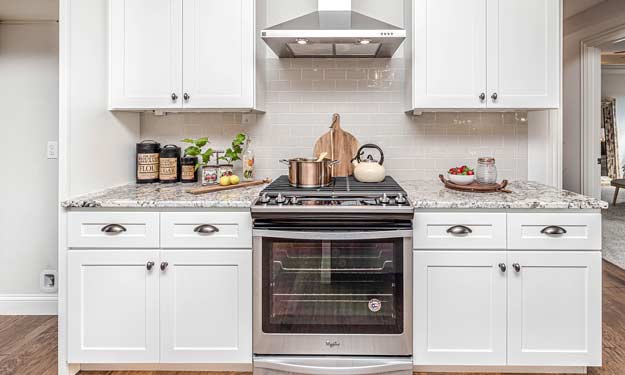Using a Self Clean Oven

Using A Self Cleaning Oven
You’ve finally got yourself a self clean oven that cleans itself – great! Right? Well, only if you know what you’re doing. Too often those of us that have an oven that does their own dirty work, don’t know how to use them.
The bad news is that not properly using a self cleaning oven doesn’t just mean that you’re cleaning unnecessarily – it can actually mean that you’re destroying its inborn cleaning capabilities.
The good news is that there are a few easy steps you can follow to ensure you’re getting the most out of your metal maid.
How a Self Clean Oven Works
Understanding how your self cleaning oven works is important to ensure that you’re both – using it correctly – and getting the most out of it.
Basically, the oven cleans itself by getting really hot – around 900 degrees hot.
Don’t worry though, the oven has a locking mechanism to ensure no one accidentally opens it while it’s blasting its heat.
The high level of heat burns away anything in its wake. It may leave behind a pile of ash, but other than that you’ve got yourself a clean oven.
Before Using a Self Clean Oven
While it’s not necessary to get in there and do a thorough clean before running the self clean cycle, if there are any major fresh spills you may want to quickly wipe them up.
Smoke is produced when your oven is cleaning itself and the less debris you have in the bottom, the less smoke will be produced.
However, make sure you’re not doing a deep clean. Many people damage the surface of their ovens by scrubbing them themselves.
The surface in your oven is specially made for self cleaning and removing that surface can affect its ability to effectively clean itself.
Once you’ve wiped the inside down, you can close the oven, turn it to the ‘clean’ cycle and step away for several hours.
The Self Clean Process
Now that you’ve got the basics of oven cleaning, lets get down to it.
- Take out the oven racks.
- Remove any large chunks of burned food that will come out easily to save yourself from extra smoke.
- Wipe up any large pools of grease as this creates a lot of smoke as well.
- Close the oven door.
- Enable the locking mechanism.
- Turn the oven setting to self clean.
The oven will self clean for a several hours and turn off by itself and it will stay locked until the temperature is at a safe level again. When you are able to unlock and open the oven, wipe out any ash that’s accumulated inside.
You can then begin cooking as normal – well, as normal as it is for you to cook in a clean oven.
How Often to Use the Self Cleaning Option?
Of course the short and simple answer is that you should run the self clean cycle when you need it.
If you notice food has spilled over, if you notice debris in the bottom of your oven – it’s time to get the cleaning going.
However, one thing to keep in mind is that self cleaning ovens have thicker insulation, which can translate into energy savings for you, as it’ll use less energy for your day to day cooking.
But if you use the self clean cycle an average of more than once a month, you’ll end up using more energy than you save.
Ideally you’d use your cleaning cycle every few months and only on days when it’s not too hot.






